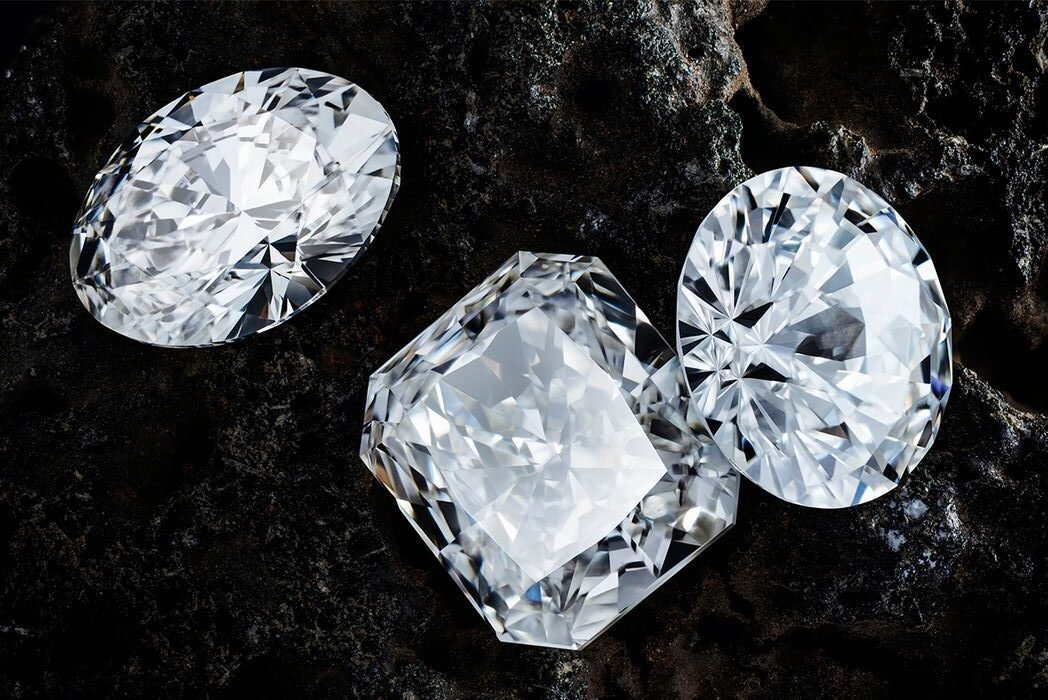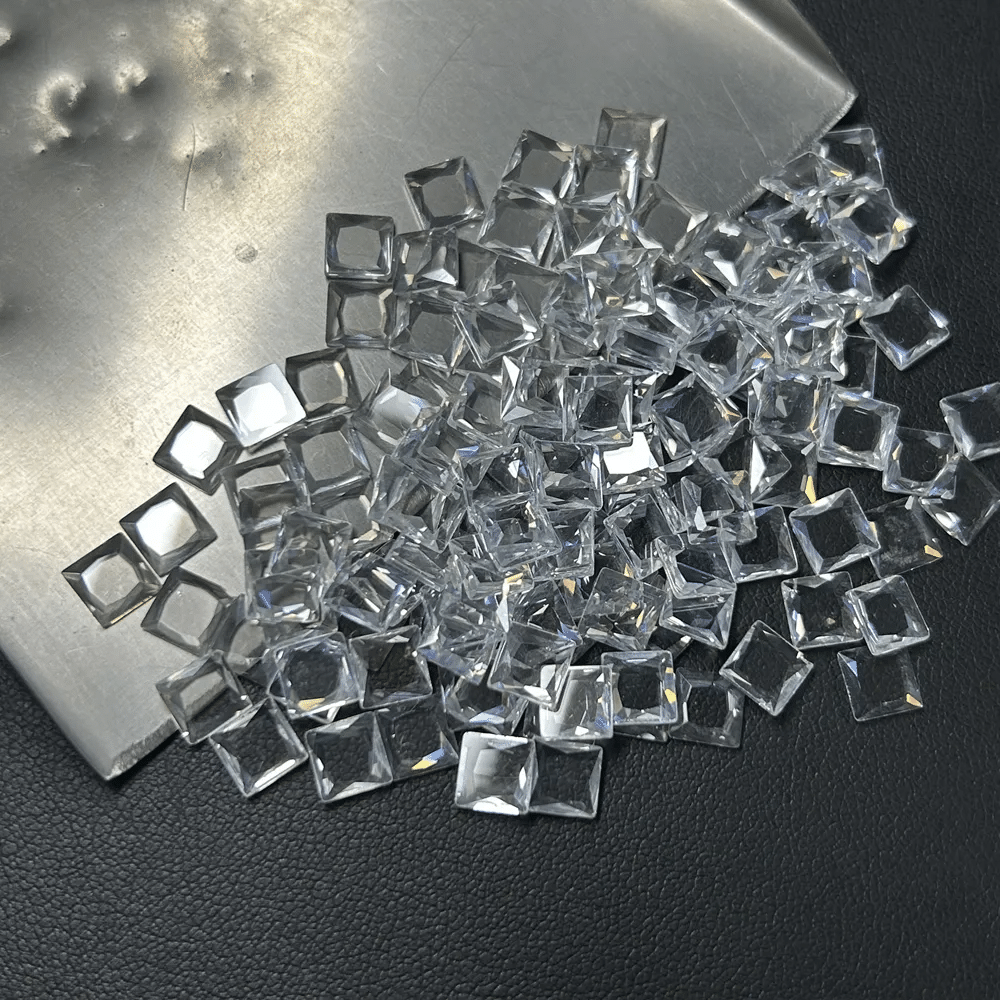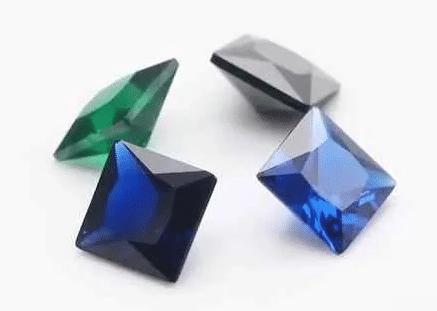Craft & Radiance.
Jewelry: Craft & Art Fused. By Top Artisans, Unique & Precious.
production process
Each step, from inspiration to craft, ensures beauty and quality.
1. Raw Material Acquisition and Processing
Raw Material Acquisition & Processing ensures quality by sourcing and processing high-grade materials.
1 - Cultured Diamond Technology
Our advanced CVD tech's 7th-gen equipment cuts diamond synthesis time to 72h from 300h, lowering 6-carat diamond costs below $1,000. This boosts efficiency & competitiveness, offering affordable options. We'll keep innovating.
CVD (Chemical Vapor Deposition) Technology
As a diamond factory, our efficient synthesis and low-cost production boost diamond output while lowering costs, making high-quality diamonds more accessible to jewelers. We'll continue to innovate for better options.
Efficient synthesis and low cost
2 - Precious metal recycling & purification
By adopting advanced recycling technology to recover precious metals from waste jewelry, we not only reduce resource waste but also decrease environmental pollution.
Eco-friendly and efficient
Through refining processes, the recovered precious metals are purified to high standards, meeting the needs of jewelry production.
High-purity refining
2. Design and Manufacturing
Design & mfg: key in fields, blending creativity with tech craft. Drive innovation, meet demands.
1 - CAD/CAM Technology
Utilizing Computer-Aided Design (CAD) software, our designers can easily create complex and exquisite three-dimensional models of jewelry.
Three-dimensional Design
By utilizing Computer-Aided Manufacturing (CAM) technology, CAD designs are directly converted into physical jewelry, ensuring that every detail aligns with the design drawings.
Precision Manufacturing
2 - 3D Printing Technology
3D printing technology makes personalized customization of jewelry possible, allowing consumers to customize unique pieces according to their preferences and needs.
Personalized Customization
3D printing technology significantly shortens the production cycle of jewelry and enhances production efficiency.
Efficient Production
3 - Advanced Casting and Forging Technology
Casting in a vacuum environment avoids the impact of air on the metal, improving the quality and stability of the jewelry.
Vacuum Casting
Through precision forging processes, jewelry with complex shapes and intricate details can be produced.
Precision Forging
4 - New Processes and Materials
Based on the investment casting process, "hard gold powder" is added to create jewelry with elegance, good flexibility, high hardness, artistic quality, bright tone, and high purity.
5G Technique
Inherited from the imperial workshops, this technique combines ancient craftsmanship with modern processes to restore eight major gold casting techniques: hollow casting, hammering, filigree, chasing, inlaying, gold refining, and others. It is meticulously crafted by hand.
Ancient Technique
By improving the composition and process parameters of the electroplating solution, the hardness and wear resistance of gold are enhanced while maintaining high purity.
3D/5D Hard Gold Technique
3. Strict Quality Control Procedures
Strict QC processes guarantee product quality at every stage.
1 - High-precision Testing Equipment
Utilizing non-destructive testing technologies such as X-rays and ultrasound to inspect the internal structure and quality of jewelry.
Non-destructive Testing
Utilizing equipment such as spectroscopes to analyze the composition of jewelry, ensuring that the material and purity of the jewelry meet standards.
Composition Analysis
2 - Rigorous Quality Control Processes
Rigorous quality control is implemented at every stage to ensure the quality and stability of the jewelry.
From Raw Material to Finished Product
As a factory, we engage third-party certification bodies to conduct testing and certification on our jewelry, thereby enhancing its credibility and market competitiveness.
Third-Party Certification
Material
Material is the basic substance for various uses, advanced by research and innovation.
Stone
Stone: Natural, hard, diverse, used widely, geological.
Diamond

Moissanite (Synthetic Silicon Carbide)
Appearance:
Remarkably similar to diamonds, high-quality moissanite is difficult to distinguish from diamonds visually.
Hardness:
Extremely high, with a hardness of 9.25, second only to diamonds, capable of resisting scratches and wear during daily wear.
Fire and Brilliance:
Emits a fire and brilliance more striking than diamonds, which is 2.5 times that of diamonds.
Price:
Significantly lower than diamonds, serving as an economical and aesthetically pleasing alternative.
CVD Method (Chemical Vapor Deposition):
CVD grows moissanite from a seed crystal, controlled for quality and speed by temperature and gas flow.

Cubic Zirconia
Appearance:
Cubic zirconia has a refractive index slightly lower than that of diamonds, but after precise cutting, it can still exhibit a dazzling brilliance.
Hardness:
With a hardness ranging from 7.5 to 8.5, although lower than diamonds, it is sufficient to resist scratches during daily wear.
Price:
Cubic zirconia is priced far below diamonds, serving as an economical alternative.
Color:
By adding different coloring elements, a variety of colors can be formed to meet different aesthetic needs.
Cold Crucible Melting Shell Method:
Cubic zirconia is mainly produced by heating zirconium in a copper cup with zirconia powder, using RF induction. Cooling water solidifies the surface. After heating and cooling, flawless crystals form. Annealing at 1400°C makes it jewelry-ready.

Nano Gemstones
Specific Gravity:
Comparable to precious gemstones such as topaz and sapphire.
Optical Properties:
Rivaling natural gemstones, they lack an unnatural intense gloss, appearing more natural and premium.
Hardness:
Moderate at 7 on the Mohs scale, ensuring durability in jewelry without appearing too rigid.
Melting Point:
High, suitable for wax setting, allowing for the creation of colorful gemstone-embedded jewelry.
Color and Transparency:
An extremely wide color range with high transparency and no internal defects.
Production Method
Nano gemstone production uses nanotech and material science. Thai factories, with patented tech, make nano zirconia gems through precise steps needing control of temp, pressure, and time.
Opal

Lab-grown opal
Durability:
Lab-grown opals are typically more durable than natural ones because their growth process is precisely controlled in a laboratory, reducing internal cracks and defects.
Controllability:
By growing opals in a laboratory, one can precisely control their color, luster, hardness, and other characteristics, thereby producing gemstones that meet specific requirements.
Environmental friendliness:
Lab-grown opals reduce the exploitation and destruction of natural resources, aligning with the concept of sustainable development.
Production Method:
Synthetic opals are made by forming, compressing, heat-treating, and polishing raw materials like silicon dioxide or polymers into a gemstone with desired shape and shine.

Synthetic opal grown using polymers

Ultra-microcrystalline opal

Amorphous opal

Play-of-color opal (or Opal with color play)

Non-play-of-color opal (or Opal without color play)

Artificially synthesized color-banded opal
pearl

artificial pearl
Environmental Protection:
The production process of artificial pearls is more environmentally friendly, reducing damage to the natural world and aligning with the concept of sustainable development.
Perfect Appearance:
Each artificial pearl is nearly perfect, eliminating the need to worry about the irregular shapes and surface flaws common in natural pearls.
Affordable Price:
Compared to the exorbitant prices of natural pearls, artificial pearls offer a more affordable option, allowing more people to easily own pearl jewelry.
Diverse Selection:
Artificial pearls can be produced in various colors and sizes, catering to different fashion needs and personal preferences.
Easy Care:
Artificial pearls are more durable and less affected by cosmetics, sweat, etc., making them convenient for daily care.
Production Methods:
Artificial pearls are made from materials like shell powder, crystal, etc., shaped through various techniques, optionally coated for gloss, inspected for quality, and processed for jewelry use.

Shell Beads

Swarovski Pearls (Austrian Pearls)

Glass Pearls

Mermaid Scale Pearls

Plastic Pearls
Metal
Metal is widely used in industries for its strength, conductivity, and flexibility.
silver

silver
Malleability & Ductility:
Silver can be easily shaped into various forms, rendering delicate lines and intricate patterns perfectly.
Unique Luster:
Silver has a soft, captivating glow that's more reserved and elegant than gold's brilliance.
Affordable Price:
Silver jewelry is accessible to more people due to its relatively affordable price compared to gold and platinum.
Antibacterial Properties:
Silver has unique antibacterial advantages in specific jewelry applications, like medical devices and health jewelry.
Production Methods:
Silver is extracted, refined, alloyed (e.g., 925 silver), cast or forged, shaped, polished, and plated to prevent oxidation and enhance durability.

S925 Silver
Meaning:
A silver alloy containing 92.5% silver and typically 7.5% other metals, such as copper.
Characteristics:
Its hardness, enhanced by alloy components, makes it suitable for intricate designs. Resistant to deformation during daily wear, it exhibits a subtly elegant luster.

Fine Silver (High-Purity Silver)
Meaning:
Silver with a purity level of 99.9% or 99.99%.
Characteristics:
Its extreme purity gives it a bright, pristine white color, but it is relatively soft and requires careful handling to prevent deformation or damage. Primarily used in traditional silverware like bowls, chopsticks, and cups.
alloy

karat gold
Combines the nobility of gold with the strength and toughness of other metals.
Can be formulated into various colors as needed (such as white, rose gold, etc.).
Suitable for jewelry inlay, showcasing the nobility of gold while compensating for its shortcomings.
Production Methods:
K gold is made by mixing metals, casting/forging, and then plating/polishing for shine and durability.
process
Our firm excels in advanced manufacturing, ensuring quality through precision processes.
Process Types
Process Types refer to various methods used in manufacturing.
lost-wax casting

Advantages and Characteristics
High Precision:
Capable of casting complex shapes with precise dimensions.
High Surface Finish:
The castings exhibit a high degree of surface smoothness, reducing the workload of subsequent machining processes.
Versatile Application:
Suitable for precision casting of various types and alloys.
Innovative:
Craftsmen can utilize the flexibility of the lost-wax casting method to create unique designs.

Process Flow
Wax Pattern Creation:
Craft precise patterns using beeswax or other fusible materials, either by hand or molding.
Pattern Assembly:
Connect patterns for multi-part or hollow castings using wax rods.
Shell Building:
Dip patterns into refractory slurry multiple times to form a solid shell.
Dewaxing:
Heat the shell to melt and remove the wax, leaving a casting cavity.
Shell Firing:
Bake the shell to strengthen it and preheat for metal pouring.
Metal Pour:
Pour molten metal into the shell and let it cool to form the casting.
Finishing:
Clean and refine the casting for final touches.
Ancient Craftsmanship Technique

Definition and Characteristics
Ancient Craftsmanship Technique, as a traditional jewelry craftsmanship, integrates various traditional methods such as casting, forging, engraving, and polishing to meticulously carve and refine jewelry pieces by hand. It is characterized by the pursuit of ultimate handicraft skills and an antique and elegant design style, with each piece embodying the craftsmanship and wisdom of the artisan.

Process Flow
Casting:
This involves pouring molten metal into prepared molds to create the desired jewelry shape. Artisans ensure metal purity and quality through multiple melting and purification processes.
Forging:
Metal raw materials are shaped by hammering. This technique is commonly used to create metal sheets, wires, and other structural elements of jewelry.
Engraving:
Artisans carve intricate cultural and artistic designs onto the metal surface, adding depth and meaning to the jewelry pieces.
Polishing and Finishing:
The final steps involve refining the jewelry using sandpaper, polishing compounds, and other tools to achieve a smooth, delicate texture and enhance the metal's luster.
Electroplating Process

Benefits of Electroplating Jewelry
Enhanced Surface Quality:
Electroplating provides a smooth, even, and reflective surface, enhancing the jewelry's appearance and eliminating imperfections.
Improved Durability:
It acts as a barrier against corrosive elements, such as sweat and cosmetics, prolonging the jewelry's lifespan.
Versatile Decorative Options:
Offers a wide range of colors and textures, catering to diverse aesthetic preferences.
Substrate Preservation:
Protects the base metal from wear, oxidation, and environmental factors, preserving its condition and value over time.


